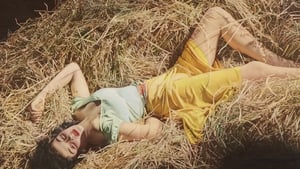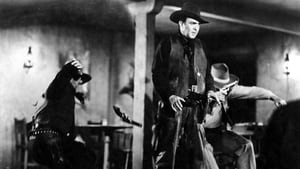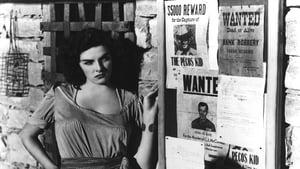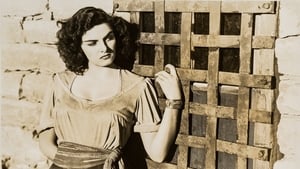Contact: [email protected]
Video Sources 0 Views

Synopsis
[ez-toc]





Introduction
In the vast realm of classic Western films, one title stands out not only for its gripping narrative but also for the controversy that surrounds its transformation. “The Outlaw Colorized 1943,” directed by the enigmatic Howard Hughes, takes us on a journey through time, offering a unique perspective on an old cinematic gem. Starring the iconic Jane Russell, Jack Buetel, and Thomas Mitchell, this film has etched its place in history, not just for its story but also for the debate it sparked around the colorization of old movies.
Read Media File Transfer Agreement: Terms and Conditions
Read FAQ
Understanding the Original: The Outlaw Colorized (1943)
“The Outlaw Colorized” (1943) emerged during a pivotal period in cinematic history, blending elements of romance and Western adventure. Directed by the eccentric billionaire Howard Hughes, the film introduced us to the sizzling chemistry between Jane Russell and Jack Buetel, set against the backdrop of the Old West. Thomas Mitchell’s stellar performance added depth to the narrative, making it a memorable classic.
The original black and white version of “The Outlaw” was a product of its time, showcasing the filmmaking techniques prevalent in the 1940s. The stark contrast and shadows added a layer of mystery and allure to the characters and their surroundings, contributing to the overall atmosphere of the film.
The Transformation Process: From Black and White to Color
Decades after its initial release, “The Outlaw” underwent a transformation that would be both celebrated and contested—the process of colorization. This technique, while aiming to breathe new life into old films, often sparks debates about artistic integrity and the preservation of the original vision.
Colorization involves digitally adding color to each frame, providing a vibrant and modern visual experience. Some argue that this technique enhances the viewing pleasure, allowing audiences to connect with classic films in a way that feels more contemporary. However, purists contend that colorization can alter the intended artistic expression and atmosphere of the original work.
Analyzing the Plot and Characters of The Outlaw Colorized 1943
The colorized version of “The Outlaw” maintains the essence of the original narrative while introducing a fresh visual perspective. The plot revolves around the friendship and rivalry between Doc Holliday (Thomas Mitchell) and Billy the Kid (Jack Buetel), with the sultry Rio McDonald (Jane Russell) caught in the crossfire. The colorization process accentuates the vast landscapes of the Wild West and adds a layer of complexity to the characters’ relationships.
Jane Russell’s portrayal of Rio McDonald takes on a new dimension with the introduction of color. Her fiery red dress and the dusty brown landscapes create a vivid contrast, enhancing the visual impact of her character. The colorization process breathes life into the vibrant personalities, making the film more accessible to a contemporary audience.
Impactful Scenes in Color: Key Moments from The Outlaw Colorized 1943
Certain scenes in “The Outlaw Colorized 1943” stand out as pivotal moments where colorization has a profound impact. The showdowns between Doc Holliday and Billy the Kid are intensified with the rich hues of the desert sunsets. The saloon scenes, once shrouded in shadows, now come alive with the warmth of wooden interiors and the colorful costumes of the characters.
The transformation of these key moments adds a layer of emotional resonance, immersing the audience in the intricate web of relationships and conflicts. While purists may argue that these changes disrupt the original aesthetic, others find joy in experiencing the film in a visually stimulating way.
The Reception: Then vs Now
“The Outlaw” faced mixed reviews upon its original release in 1943, with some praising its daring themes and others criticizing its controversial content. Fast forward to the colorized version’s release, and the reception was equally diverse. Some applauded the effort to revitalize an old classic, citing the enhanced visual experience, while others lamented the potential compromise of the original director’s vision.
This disparity in reception raises questions about the evolving tastes and expectations of audiences. As film appreciation evolves, so does the way we interpret and value these cinematic treasures.
Preserving Film History: Balancing Restoration with Respect for the Original Vision
The debate surrounding the colorization of old movies often revolves around the delicate balance between preserving film history and respecting the artistic intent of the original creators. Film preservation is crucial in ensuring that future generations can appreciate the cinematic milestones that paved the way for contemporary storytelling.
The colorization process aims to make classic films more accessible to modern audiences who may be deterred by the black and white aesthetic. However, the challenge lies in finding a middle ground that preserves the historical significance of the original while embracing the possibilities offered by technological advancements.
The Outlaw Colorized 1943 and the Debate on Artistic Integrity
At the heart of the controversy surrounding “The Outlaw Colorized 1943” is the question of artistic integrity. Does the act of colorizing an old film compromise the director’s original vision, or does it breathe new life into a piece of art that might otherwise fade into obscurity?
Howard Hughes, known for his eccentricities, might have had a different opinion on the matter. The colorized version adds a layer of complexity to his work, inviting viewers to explore the film from a fresh perspective. However, the question remains: does this enhance or dilute the intended impact of the original?
Reviving Old Movies Through Colorization: Is It a Worthy Endeavor?
As technology advances and the film industry evolves, the question of whether to colorize old movies becomes more pressing. For some, the process is a worthy endeavor that introduces classic films to a new audience. The addition of color can make these films more relatable and engaging for viewers who may find the black and white aesthetic distancing.
On the other hand, purists argue that tampering with the original form of a film risks losing the essence of the director’s vision. The debate highlights the ongoing tension between preserving history and adapting to contemporary sensibilities.
Honoring the Past, Embracing the Future: The Timelessness of The Outlaw Colorized 1943
“The Outlaw Colorized 1943” invites us to reflect on the timelessness of certain cinematic works. While the debate over colorization rages on, the film remains a testament to the enduring power of storytelling. The characters, the plot, and the controversies surrounding it are all part of a rich tapestry that contributes to the legacy of classic cinema.
As we navigate the evolving landscape of film appreciation, it’s essential to honor the past while embracing the possibilities of the future. “The Outlaw Colorized 1943” serves as a bridge between these two realms, prompting us to celebrate the roots of cinematic artistry while exploring innovative ways to engage with it.
Where to Watch The Outlaw Colorized 1943
For those intrigued by the colorized version of “The Outlaw,” various streaming platforms offer the opportunity to experience this controversial transformation. Whether you’re a purist curious about the evolution of classic films or a newcomer eager to explore the Old West in vibrant hues, the film is accessible to a wide audience.
Conclusion
In the ever-changing landscape of cinema, “The Outlaw Colorized 1943” stands as a testament to the complexities of preserving and reinventing the classics. The film, with its stellar cast and controversial history, challenges us to reconsider our notions of artistic integrity and the evolving nature of storytelling.
As you embark on this cinematic journey through time, I encourage you to watch “The Outlaw Colorized 1943” and form your own opinion on the colorization process. Whether you find it a refreshing take on a classic or a departure from the director’s original vision, the experience is bound to spark contemplation on the intersection of past and present in the world of film.
















